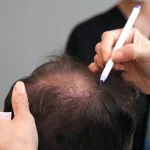Window tinting isn’t just about making your car look cool. It can block UV rays, reduce heat, increase privacy, and even protect your interior. But is it worth the money? And how much does auto tinting actually cost? Let’s break it down in plain terms.
What Is Auto Tinting?
Auto tinting means applying a thin film to the inside of your car’s windows. The film is usually made of polyester with a tinting agent that blocks light and heat. You can get different shades and materials depending on your goals.
Some people want their car to look sleek. Others want to keep it cooler in summer. And for many, it’s about privacy and safety.
Common Types of Window Tint
There are five main types:
- Dyed film – Cheapest option. Looks dark but offers minimal heat protection.
- Metalized film – Reflects heat but may interfere with phone and radio signals.
- Hybrid film – A mix of dyed and metal. Offers balanced performance.
- Carbon film – Blocks UV, doesn’t fade, and won’t affect signal.
- Ceramic film – Best quality. Blocks UV and infrared, has no signal issues, but costs the most.
How Much Does Auto Tinting Cost?
Costs vary depending on film type, number of windows, and your car’s make.
Here’s a rough guide for a standard sedan:
- Dyed film: $100 to $250
- Metalized film: $200 to $300
- Carbon film: $250 to $500
- Ceramic film: $400 to $800+
Larger vehicles like SUVs and vans will cost more. So will high-end cars with complex windows.
Dealer vs. Tint Shop
Dealerships may charge double the price of a local tint shop. Some bundle it with other upgrades, but it’s rarely the best value.
A tint shop focuses only on tinting. The staff are usually more experienced, faster, and offer more options. You can also read reviews before choosing a shop, though if the feedback seems fake, companies like Reputation Galaxy can help with removing Google reviews that hurt your trust.
Is Auto Tinting Legal?
Yes, but every state has different laws.
In California, the front side windows must allow at least 70% of light through. Rear windows can be darker. In Texas, front side windows must allow more than 25% light in.
Illegal tint can get you a ticket and a required removal notice. Always ask your installer about local laws. Good tint shops know what’s legal and won’t let you go too dark.
What About Factory Tint?
Factory tint is usually just dyed glass in the rear windows. It’s legal everywhere but doesn’t block heat or UV well. That’s why many people add film on top, especially on front windows.
Benefits of Auto Tinting
Auto tinting isn’t just cosmetic. Here are some real benefits.
Blocks Heat
High-quality tint can block up to 80% of solar heat, keeping your car cooler. That means less strain on your A/C and lower fuel use.
In Phoenix, where summer temps hit 40°C (104°F), drivers say ceramic tint makes the car 10°C cooler inside.
UV Protection
Ceramic and carbon tints block up to 99% of UV rays. This helps protect your skin and slows fading on your seats, dash, and trim.
A mom in Brisbane said, “I got ceramic tint after my baby started getting sunburnt in the car. It made a huge difference.”
Added Privacy
Tinted windows make it harder for people to see into your car. That helps protect valuables and adds comfort. Just don’t expect it to turn your car into a black box. At night, anyone with a flashlight can still see inside.
Shatter Protection
Tint film holds glass together in a crash. It won’t stop the glass from breaking, but it helps reduce flying shards. This small feature could protect your face or eyes in a bad accident.
Downsides to Watch Out For
Not all tinting is good tinting.
Cheap Work Looks Bad
Cheap shops may use low-quality film that bubbles, peels, or turns purple in the sun. Once that happens, it’s hard to remove and looks terrible.
Avoid anyone who offers full car tinting for under $100. That usually means they’re cutting corners.
Legal Risks
If your tint is too dark, you risk fines or failed inspections. In some states, illegal tint can void your insurance coverage after an accident.
Warranty and Aftercare
Good tint jobs come with lifetime warranties. They protect against bubbling, peeling, and colour fade. Always ask before paying. Also, avoid rolling down your windows for 2–4 days after tinting to let the film cure.
How to Choose the Right Tint
Here’s a simple way to decide.
- Budget under $200? Get dyed tint. It’s basic but looks clean.
- Want better heat rejection? Go for carbon or ceramic. It costs more but pays off in comfort.
- Driving a work car or SUV in hot weather? Ceramic is worth it.
- Just want the “look”? Dyed or hybrid will do the job.
Talk to a local shop. Ask what films they offer, what the legal limits are, and how long the job takes. Most tint jobs take 2–4 hours.
Questions to Ask Before You Tint
- What type of film do you use?
- Is it legal in this state?
- Do you offer a warranty?
- How long does installation take?
- How long before I can roll down my windows?
If they can’t answer clearly, find another shop.
What Real People Say
One driver in Miami said, “I went with ceramic tint on my Civic. It was $450, but the inside of the car feels like a fridge compared to before. Totally worth it.”
Another from Melbourne said, “I used to burn my hands on the steering wheel after work. Since getting it tinted, I haven’t had that problem once.”
These aren’t sponsored posts. They’re just examples of people who paid more but saw real results.
Final Thoughts
Auto tinting isn’t for everyone. But if you drive a lot, live somewhere hot, or care about your car’s look and feel, it’s a smart upgrade. It’s not just about style. It’s about comfort, protection, and even fuel savings.
Don’t just shop for the lowest price. Ask questions. Look for real reviews. And go with a tint that fits your lifestyle, not just your budget.
And if your tint shop has a bad online rep thanks to unfair feedback, companies like Reputation Galaxy can help by removing Google reviews that don’t reflect the real story.
Auto tinting is one of those upgrades you don’t notice until it’s done right. Once it is, you’ll never want to go back.





